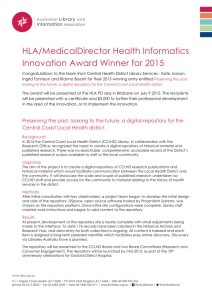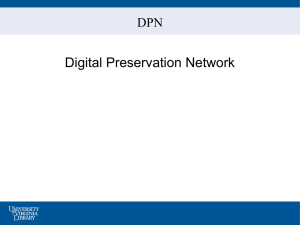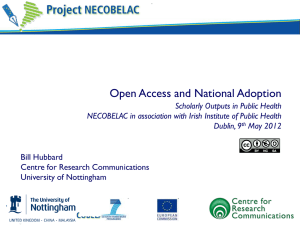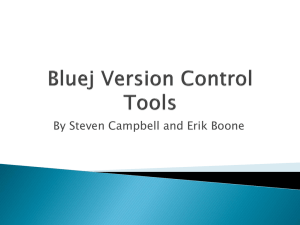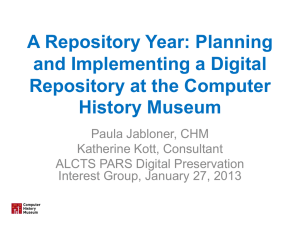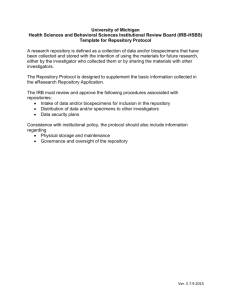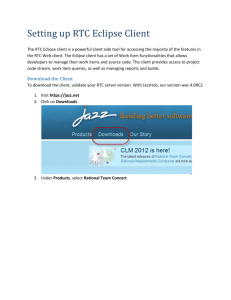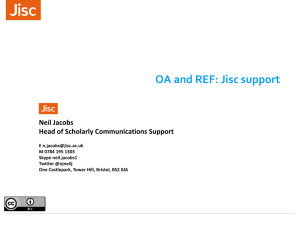PPT slides - BioMed Central
advertisement
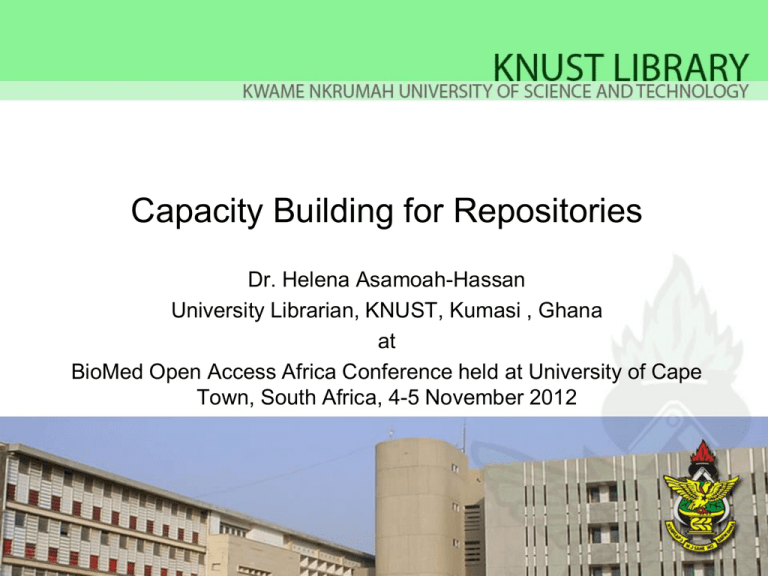
Capacity Building for Repositories Dr. Helena Asamoah-Hassan University Librarian, KNUST, Kumasi , Ghana at BioMed Open Access Africa Conference held at University of Cape Town, South Africa, 4-5 November 2012 Introduction Repositories • alternative means for publishing scholarly information. • make scholarly work of researchers globally available and so well cited. • feature the intellectual output of institutions which enhances their visibility and increases their impact. • Enable long term archiving of research works 2 Why Capacity Building? • Primary aim is to build and strengthen the capacity of repository managers, repository administrators, library staff, and stakeholders who will be involved in establishing, managing and using the Intellectual output recorded in the repositories. • To also ensure that - work of the repository is uninterrupted - optimum service is provided to users - repository is sustained and reliable When Capacity building? • Before repository is created - to train personnel to accept and work with it. - to inform stakeholders to ensure their buy-in. • During its creation - to correct any mistakes in the process. - to further train personnel and tighten loose ends. • During its operation - to ensure that new methods being developed are introduced to improve the service. How Capacity Building? • • • • • • • • • Workshops – individual fields and all put together Conferences / Seminars/ Webinars On-the-job-training / One-on-one-training IR Communication Platform - A website available for online repositories skills dissemination, knowledge sharing and networking eg. www.irafrica.info. (Dgroups) Serves the community of repository experts Forums - for knowledge sharing and networking Social networking tools eg. Podcasting, Tweeting etc. Toolkit – A compilation of a set of tools, instructions and information that provide practical information on key steps for setting up and managing repositories within institutions. Resources / Survey report – Reports that provide baseline information on repositories which are common to institutions. The report may also highlight the existing challenges and best practices that can be used address situations particular local settings. News & Events and IR Online community Capacity Building for who? Library personnel • Advocacy to institution’s management, faculty and researchers. • Staff to run repository and their retention. • Mediated archiving. • Monitoring and evaluation. • Software /platforms for building the repository. Capacity Building for who? Champions • To raise awareness among colleagues. Faculty /Researchers • To understand the benefits of a repository. • Self archive and download effectively. • Comply with copyright issues. • Software /platforms for building the repository. Capacity Building for who? Institution’s IT personnel • Maintenance of good network connection. • Maintenance of high speed bandwidth. • Importance of ensuring that system is always on with very reduced downtimes. • Software /platforms for building the repository. Capacity Building for who? Repository Administrator • • • • • Technical implementation of the repository. Customisation of repository software. Creation of user reports. Digital preservation issues. Maintenance of the equipment. 9 Capacity Building for who? Repository Manager • • • • • Handling of human issues. Handling of content policies. Training of users. Advocacy. Registration of repository for international harvesting – Oaister, Open DOAR, ROAR etc. Capacity Building for who? Institution’s Administrators • Formulation of Repository policies. • Assistance in implementation of the repository. • Setting up of the repository advisory committee. Capacity Building for who? Repository Advisory Committee • Fundraising to maintain the repository. • Monitoring and evaluation mechanism to sustain the repository. • Setting up of standards and guidelines including making the repository OAI-PMH compliant. • Managing digital and copyright rights. • Long term preservation decisions- bit/format preservation. Conclusion Capacity Building is very necessary for creation and sustainability of a repository- why? • Puts it on a firm footing. • Ensures new developments are embraced for regular updates to improve it. • Ensures proper management structures are put in place/implemented. • Knowledge of key personnel are constantly refreshed. • Ensures that stakeholders have knowledge of the benefits and so they buy in to sustain it. Thank you 14
